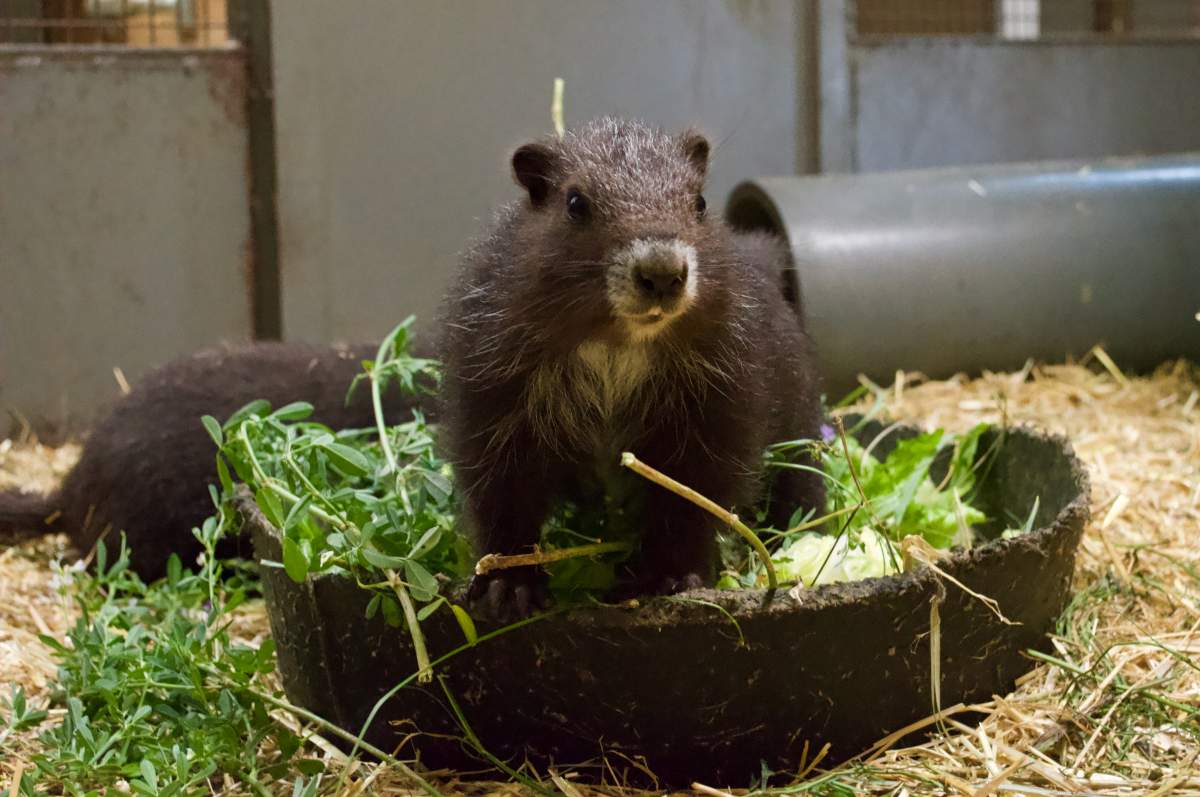A team of wildlife conservationists near Calgary are celebrating a win for Canada’s most endangered mammal.

The new Archibald Biodiversity Centre at the Wilder Institute found 14 new Vancouver Island Marmot pups in their brand new breeding facility southeast of Strathmore, Alta.
“This was the first breeding season, and we were all cautiously optimistic that the upgrades and changes that we’ve made to their enclosures would best support conservation breeding,” Caitlin Slade, animal care manager at the Calgary Zoo’s offset breeding facility, told Global News.
“And to have eight (breeding) pairs produce five litters speaks to the successes that we’ve made for this species under human care.”
Slade said in 1998 there were an estimated 70 Vancouver Island Marmots left in the wild.
“Between the Wilder Institute, the Toronto Zoo and the Tony Barrett Mt. Washington Marmot Recovery Center, we have housed marmots under human care for reproduction for release back to the wild. And so the goal for all three of these institutions is to produce pups that will make their way to Vancouver Island and then be introduced into their wild habitats,” she said.
In the past 25 years, wild marmots on Vancouver Island have rebounded to number around 200, “but not to a place where this species would be considered to be self-sustaining yet.”

Get breaking National news
Dark brown ground squirrels about the size of a large cat, marmots are perhaps best known for their “scream.”
“They have this alarm call that alerts their neighbours to a threat,” Slade said. “So you have this high pitch or a whistle that is sort of ear-shattering, but certainly lets you know that they know that you’re around.”
As far as Slade can tell, the new pups are in good health, but the conservation team generally take a hands-off approach to prevent dulling any natural instincts.
“I suspected that there were litters underground that we just couldn’t access or couldn’t see. And that has proven to be correct,” she said, noting some of the litters emerged from their underground burrows over the weekend. “So they’re now old enough to come out of those underground burrows on their own to start exploring their habitats.”
Slade said the goal is to send all 14 pups back to Vancouver Island for release into the wild, but some may be retained to create the next generation of the endangered marmots.











Comments